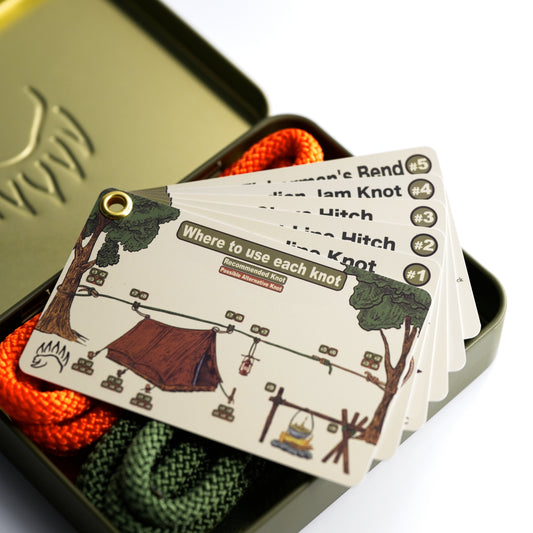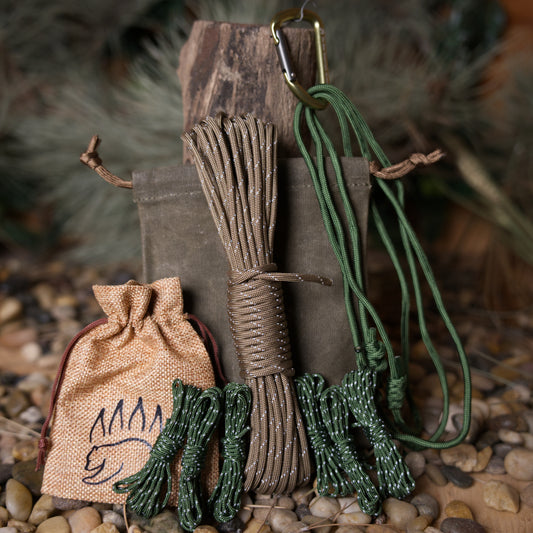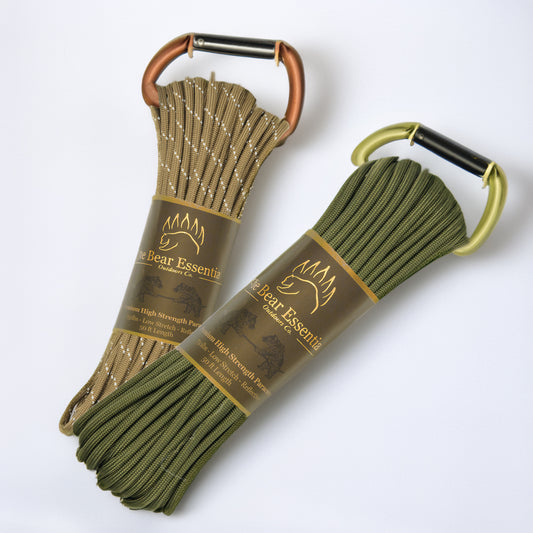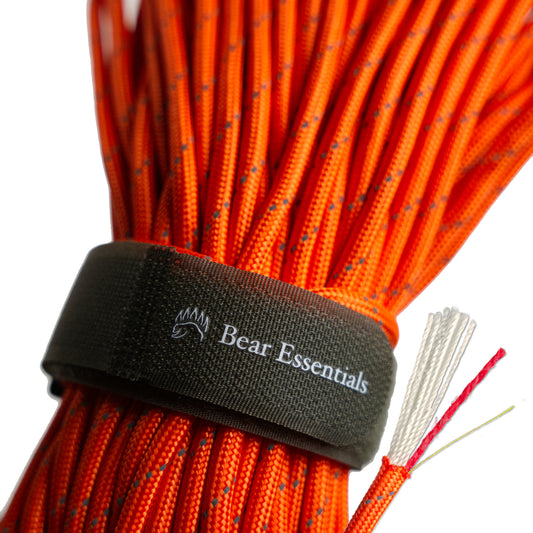How to Tie the Constrictor Knot
Usage
The Constrictor Knot is designed to bind tightly and resist slipping. It’s basically a more secure version of the Clove Hitch - when you want a more reliable and often permanent hold.
Why Learn the Constrictor Knot?
The Constrictor is a great one to know in Camping or Bushcraft specifically. It’s a good one to use on slippery ropes or whenever a permanent binding knot is needed. In Bushcraft, lashings will typically start or end with either a Clove hitch or Constrictor knot.
Common Uses
This knot is tied to secure a bundle of objects together.
Camping and Bushcraft
- Whenever starting or finishing a lashing
- Tying off the end of a slippery rope
- Shelter building
- As a whipping / securing the end of a fraying rope
- Tying off the neck of a bag or sack
Farming
- Used to secure fencing and wrap wires
Scouting
- Constructing pioneering projects, like bridges and shelters
Household / Workshop
- Can be used to clamp a hose
- Used in place of Zip Ties or Cable Ties
- Tying off items like garbage bags, or in the garden
- Can hold items together for gluing
Other
- Commonly used on spearguns to attach the bands, bind wishbones and tie the shooting line to the spear shaft.
ABOK Number
(Ashley Book of Knots)
Other Names
Category
|
Notable Features
- This is an exceptionally secure knot that is highly resistant to slipping.
- It's effective in binding items tightly together.
- It can be used to tie slippery or smooth ropes.
- It maintains tension even when the rope is wet.
Security Level
Very secure when tied around poles, sticks, or sacks. Cannot be fully trusted if tied around irregularly shaped objects or objects with corners.
Downsides
- Only works well on cylindrical objects, and won't work at all on flat surface objects
- Once tied, it’s very difficult to get loose.
- If using a thin rope, it’s strong enough to cut through or damage/disfigure the material it’s wrapped around
Structure
Unlike the clove hitch knot, the constrictor knot differs primarily in its gripping power and intended use. While the clove hitch is a versatile and easy-to-tie knot commonly used for securing lines to objects, it can slip under load or with certain materials. In contrast, the constrictor knot, though slightly more complex, incorporates an extra wrap - this enables it to bind tightly on itself and resist slipping or coming loose, making it ideal for situations where a secure and permanent hold is required.
How to Tie a Constrictor Knot
Step 1
Wrap the rope around your object, such as a tree branch. Bring the rope up on the other side and cross it over, creating an X shape.
Step 2
As you continue with your wrap, cross your line over that main rope and then under the middle of the X shape
Step 3
Cross the free end over the main rope and slip it under the X shape
Step 4
Grab both ends of the rope and pull to tighten.
Step 5
Dress the knot, which is putting it perfectly in line. Now you have a constrictor knot that is cinched up really snug.
How to Undo the Constrictor Knot: Useful knot
If you're going to attempt to undo the knot, simply push both of the ends towards itself. If you're lucky, the whole thing will unravel. But most of the time, this knot is not going to let go.
Tying a Constrictor Knot With a Quick Release
Step 1
Wrap the object and create the X shape. With the free end of the rope, go all the way around and place it over the main line.
Step 2
Create a bight, which is a fold in the rope that resembles an inverted U-shape. Slide the bight through the center underneath the X.
Step 3
Tug both ends outward to tighten the knot. You'll have one end that's completely workable, while the other end is fixed. To apply the quick release, just pull the free end loose or tag end, as it's called, and the whole thing comes completely free.
Don't Have Access to the Free Ends?
Now, even if you don't have access to the free ends of the rope, you could still tie this knot midline and then slip it over an object. Here's how you can do it.
Step 1
Take your rope in both hands. Using your right hand, flip your wrist to create an overhand loop, which is a loop in the clockwise direction.
Step 2
Grab the loop of the rope so that the both ends are going out of opposite sides
Step 3
With your right hand, do an underhand loop, which is a counterclockwise motion
Step 4
Take both of your thumbs and touch them creating the floating constrictor hitch. Put on an object and tighten up without having access to either end.









